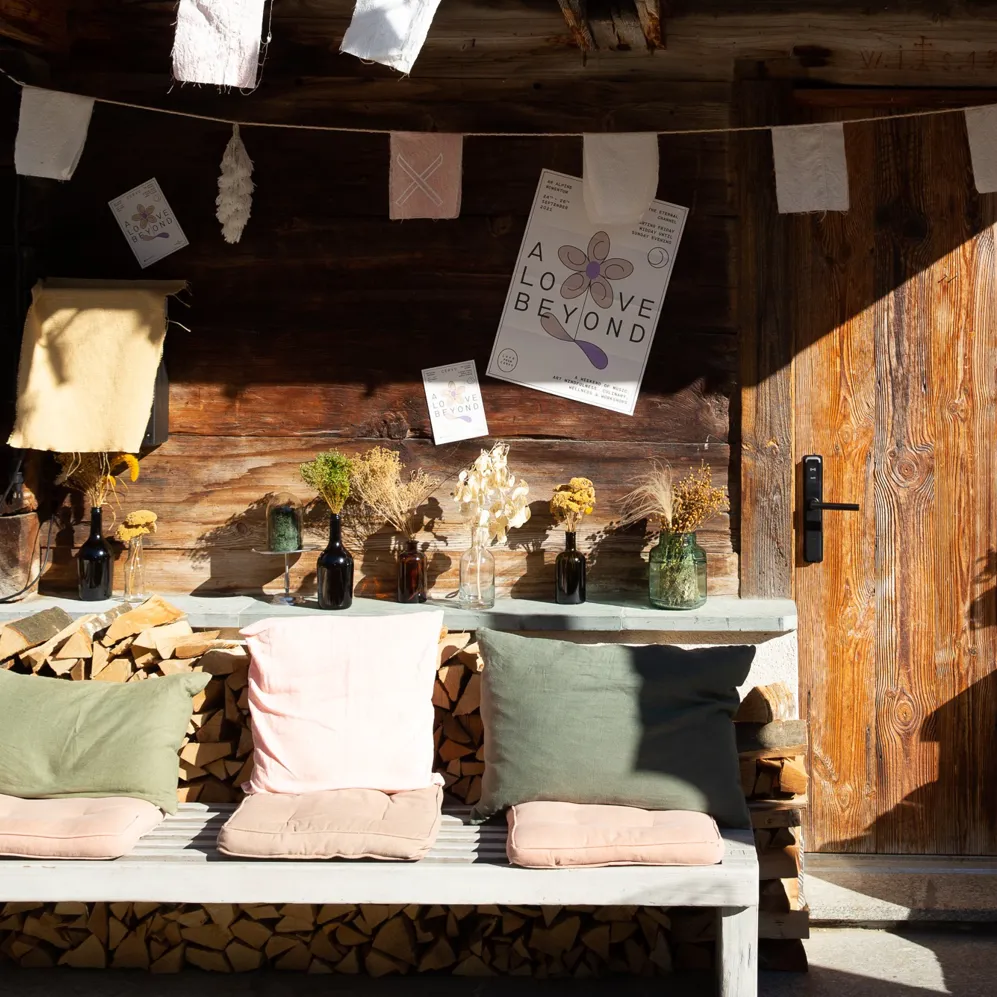
Words Vidula KotianImages Jaclyn LockeDate 29 October 2021
To answer these questions and more, we recently brought together a panel of experts in the fields of hospitality, architecture and design, and media during A Love Beyond, a weekend of mindfulness, music, wellness, and workshops at Cervo Mountain Resort.
Looking to the future of travel with their feet firmly planted in the present were our panelists: Kesang Ball, co-founder of Trippin, the content platform that’s redefining the travel industry; Marcus Fairs, founder and editor-in-chief of Dezeen, one of the world’s most popular and influential architecture, interiors, and design magazine; and Daniel Lauber, the man behind Cervo, a mindful gateway to the mystical mountain world of the Alps. Below is a brief glimpse into the enlightening and lively discussion we had on all things travel and beyond.
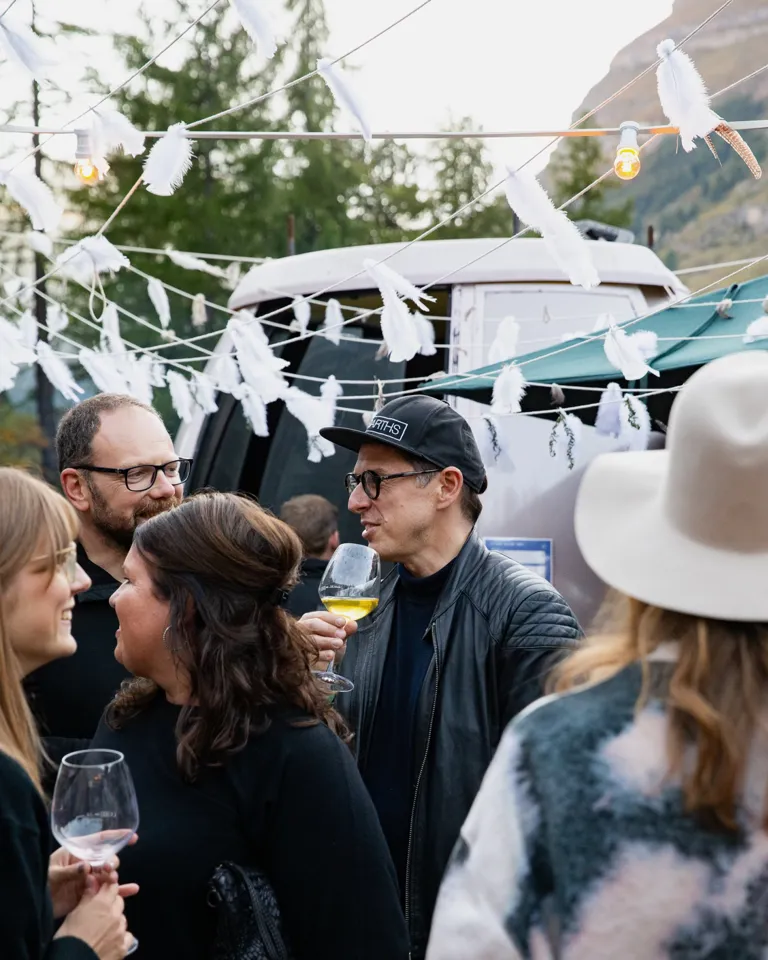
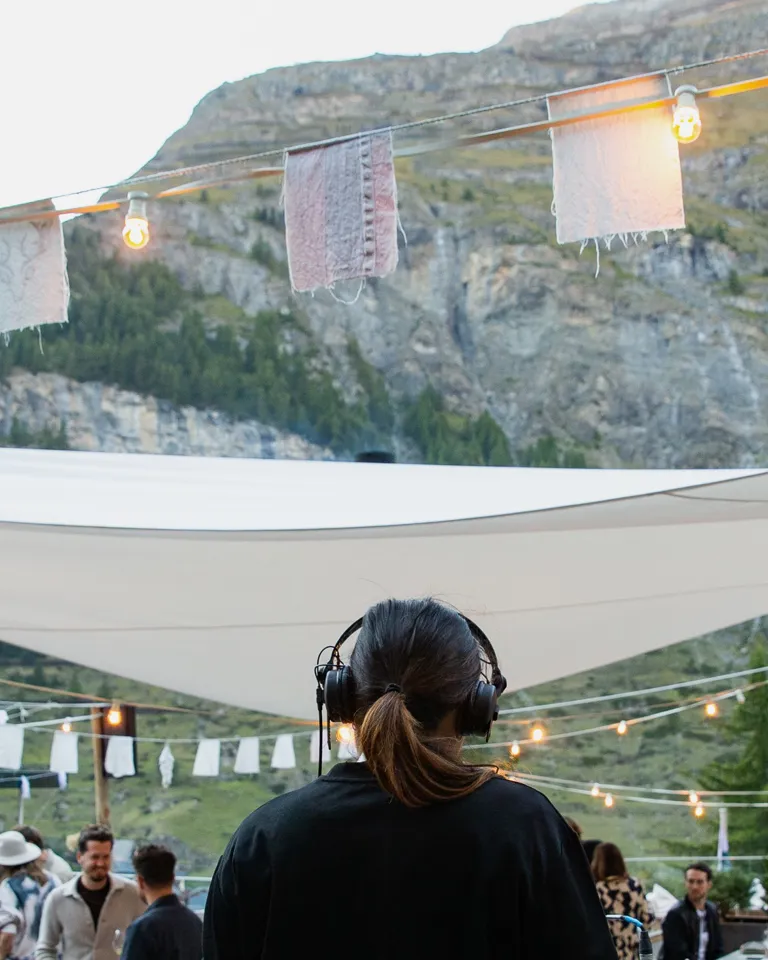
Daniel Lauber: If you really want to be sustainable, why travel at all? We would all sit at home and that would be terrible. We’ve all experienced what it means to not be able to travel during the pandemic.
It’s about accepting the other culture and seeing how they do things. And to try to travel in a sustainable way. Eco-consciousness is a bit difficult in hospitality where it’s been greenwashed. There needs to be a more holistic approach that includes the social aspect, the workers, and the local community. Take Zermatt as an example, it’s a beautiful tourist destination but it wouldn’t be the same without the local community, carpenters, butchers, et al. When you build a hotel, you have to make sure that they still have space to live. If the locals can’t live here anymore, as a tourist you will feel the lack of involvement. It’s a whole approach.
DL: The key for us was to really involve the staff. Sometimes you have treasures within your staff that you don’t know about. That’s the beauty of this industry. There are people who come for a season to take advantage of the Zermatt and skiing. We have Madelaine at the bar. She’s been working in service to make some money to go to Brazil with her husband. But back in the day, she studied supply chain management and sustainability in Berlin. So now she is also our sustainability manager and suddenly it isn’t a directive from the management but a concept spreading through the entire team. They start to live that and come with suggestions of where we can reduce waste and use less plastic or more reusable stuff.
On the technical side, we were looking for a tool to measure it. In Switzerland, we have the sustainability label ibex fairstay. They have different categories in which you get points, but they also come to help and support you.
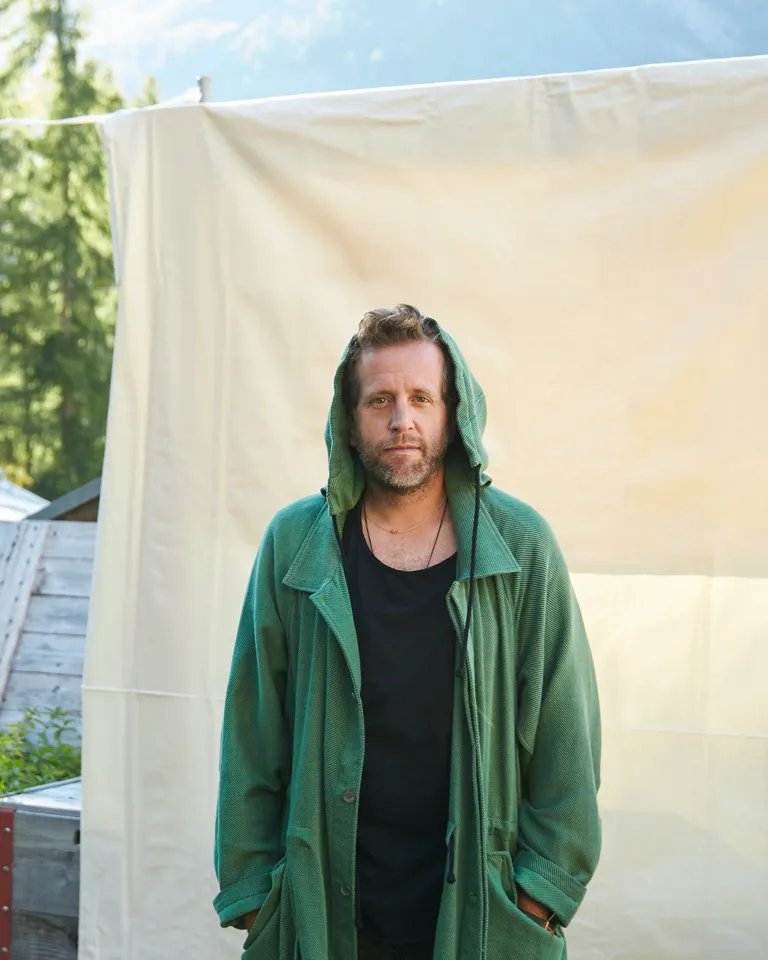
Daniel Lauber
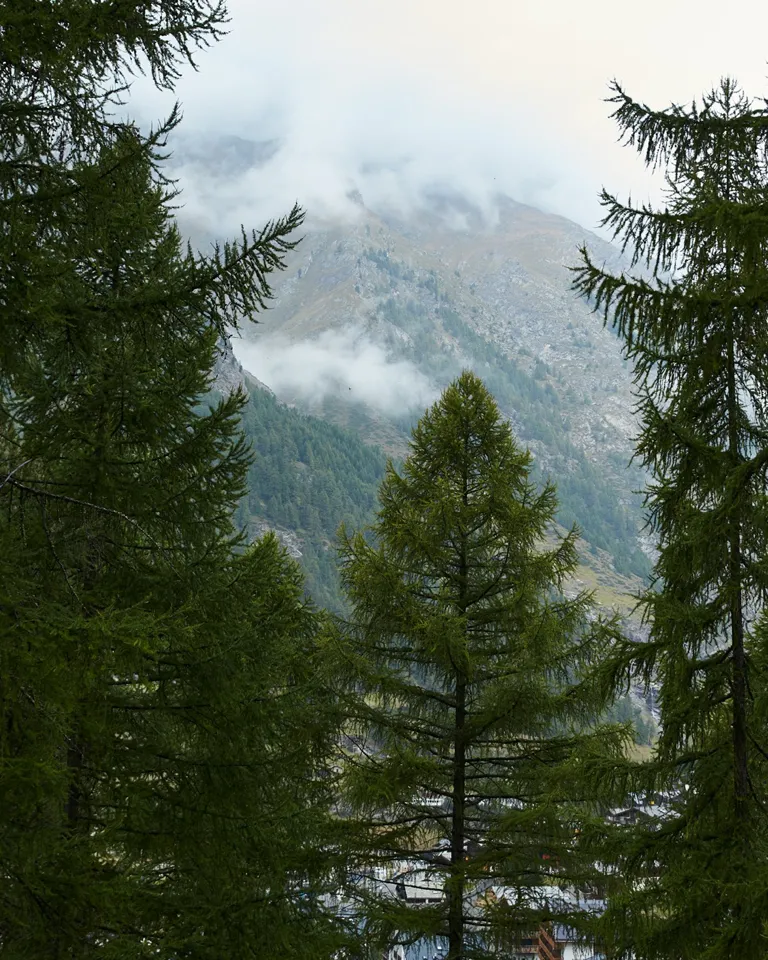
Marcus Fairs: Plastic was a thing that everyone was concerned about a couple of years ago but now it’s carbon. There is a realization that we’re on this fast ski slope towards disaster because of atmospheric carbon dioxide. A report came out a couple of years ago that identified concrete as one of the biggest contributors to climate change. So, there is a feeling of shame in the architectural community. The built environment such as hotels, houses, and factories around the world contribute 40% of carbon emissions.
The big topic, at the moment, is about how to decarbonize the running of a building, which is the easy bit actually, because you can have geothermal heating, solar wind energy, and good insulation. But half of the carbon emissions from new buildings happen during construction. There is a huge movement towards carbon-free or -negative materials. Timber is an obvious one but also hemp. If you plant a hectare of hemp, it can sequester twice as much carbon from the atmosphere as a forest and it is a fantastic insulation material. You can also make bioplastics out of it. Bamboo is super-fast growing. And then there are more science-based ones like algae and mycelium, which is a mushroom-type product. And what about reinventing traditional materials? Is it possible to have zero-carbon or negative-carbon concrete? Concrete that during its life sucks carbon dioxide.
I also have to point out with flight shaming that the internet is a bigger contributor to climate change than all of aviation. Anyone running a website, who criticizes people flying, should think about their own business. People tend to fixate on the easy, high-profile things. When you asked about purposeful travel, I was a bit confused about what that meant because particularly during the pandemic, I realized that traveling is a privilege. It’s not a right. I’m lucky to be able to travel. So many people can’t. It’s not sustainable. But if there is a purpose to travel, then it is to do it responsibly, knowingly, and to be aware of the contradictions of trying to travel sustainably.
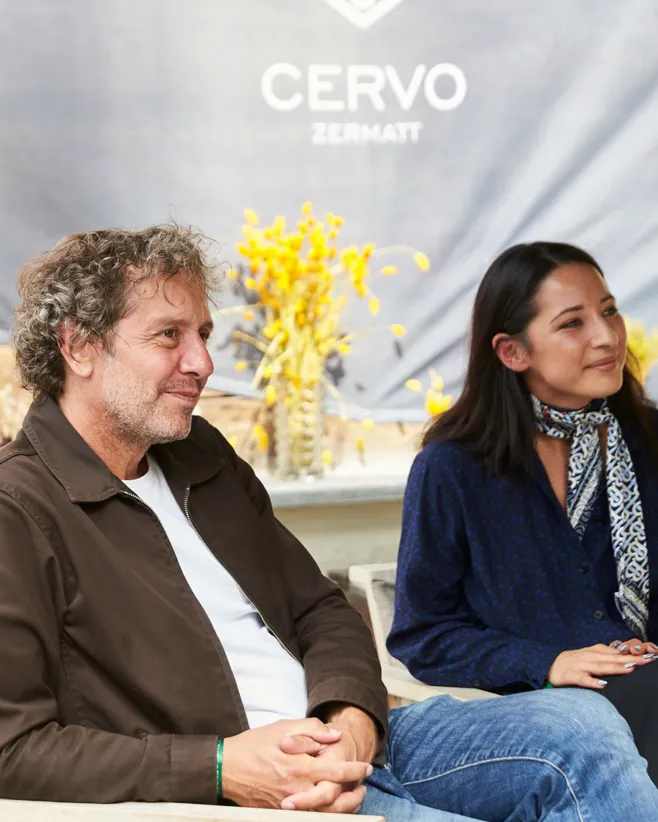
Marcus Fairs
MF: The whole climate change agenda is very scientific. It’s hard to understand what’s going on. We hosted a conference two years ago and we made sure there was no single use plastic at the entire event. All the lanyards were made of recycled cards or fabric and the catering was done without plastic. We encouraged people to walk. We only flew in one speaker; everyone else came by train. But then the environmentalist we invited to audit the conference asked how many emails we sent, and we said probably millions. She said that the carbon footprint of that was enormous, and she didn’t even mention the website.
Earlier this year, somebody from the team brought my attention to this website called EcoPing. It’s run by this young guy Dryden Williams from west England who audits websites for their carbon footprint. Williams audited our site autonomously and he wrote a blogpost about what an utter disaster it was. We were shocked. We were just getting used to the email thing. Turns out, it’s the high-resolution images we use on our site. We have 800,000 images so every time someone calls one of them up, it takes energy. Anyway, he agreed to help us reduce the carbon emissions from our website. We managed to reduce it by 68% already with new code and changing the way we serve images. What’s interesting is that he can look at the data on any day and see which parts of the world most of the traffic is coming from. So say, there is a server in Norway serving Europe. That’s good because most of the power in Norway is renewable. If it’s based in the U.S., it’s bad. He can tell us how much of the energy is renewable or not.
All of that data is available to us now. It’s very intimidating because the more you look, the more you realize what a disaster your business is. We decided to make a commitment to become net-zero carbon by 2025. Our website is now carbon neutral because we’ve bought offsets that actively remove carbon from the atmosphere. Offsetting is good, in my opinion, if you take carbon from the atmosphere, but not good if you just buy some solar panels or plant some trees that aren’t going to be looked after for 100 years. We’re happy to share with people how we’re doing it and to provide tips. We’re also prepared to fail. It’s important to try.
Kesang Ball: It’s so important to have a conversation about it. You’re going to always be on a journey. You will never be 100% sustainable so it’s also demystifying that kind of illusion.
KB: Part of our mission statement is to help our community and young people to travel with more purpose. It was one of the reasons my co-founder Sam and I started up Trippin because we felt there was no publication that was speaking to the type of travelers that we were or where the values of the younger generation were put in place, such as sustainability and all its pillars.
So, one of the areas we care very much about is the social side of sustainability...looking at the importance of authentic narratives and how much that can really influence the storytelling of culture and how other traditional media publications have created a distorted culture. When travelers go to places, they have a perception of the culture which is very much through a Western lens. That’s what we’re trying to change about travel. We have a huge community of creative travelers around the world and all the content you see on our site—the travel guides, podcasts, films, photography, and real-life events such as gallery exhibitions and panel talks, for example, are powered by them. We only partner with locals on the ground to make sure that there is always an authentic narrative.
Over the pandemic, it gave us a chance to rethink our purpose and our place in where we see the future of travel going.
Travelers need to know how to act. We did a report with the University College London—my old university—at the beginning of this year to really understand and unpick the young person’s mindset when they’re traveling. Ninety percent of our community and young people wanted to travel more sustainably but just didn’t know how to because the industry is not communicating that in a way that is digestible. Also, each person has their own definition of what sustainability is. We talk about that through storytelling, films, and engaging, compelling bits of content, creating a much more digestible way of understanding how to move in the world.
Even the way young people view luxury is changing. It’s not enough to be a heritage brand or focus on design. How are you speaking and being culturally aware? What’s your cultural programming? How are you integrating with locals? Young people care about all these conversations and that’s the way the travel industry is moving.
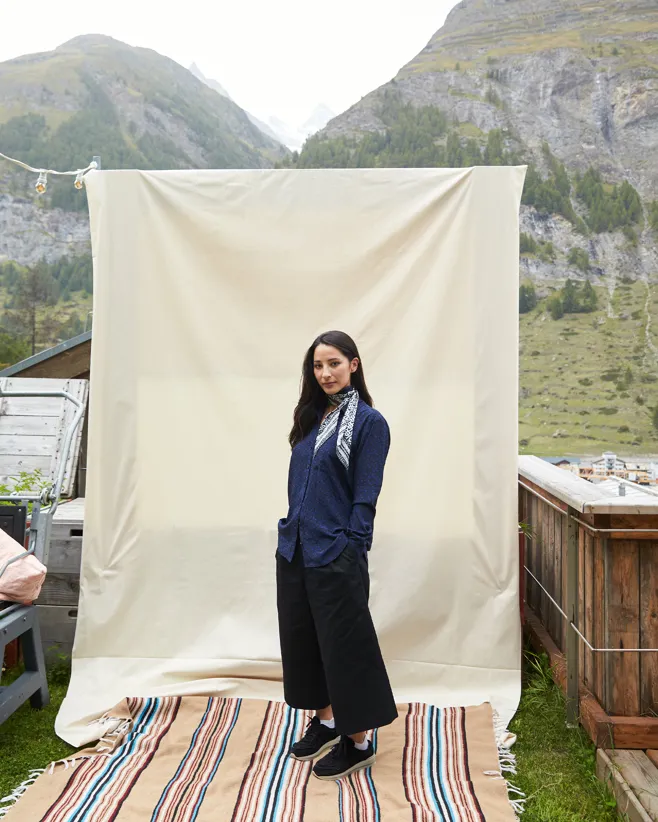
Kesang Ball
KB: Sustainability is a very scientific topic and younger people are suffering from climate anxiety. So how can we tell a story that’s engaging and not as scientific- or anxiety-driven. A lot of the report looks at the ways in which young people will feel more incentivized to travel with purpose and breaking that down.
MF: There is a battle going on in the architecture world. There are these architects who won all these awards 20 years ago and are stuck in their ways. If Norman Forster gets a chance to build a billion-pound resort in Saudi Arabia, he’s going to do it and pretend it’s sustainable by putting some solar panels on the roof. Then there’s a younger generation of architects who are calling bullshit because the whole system is geared towards the energy performance of a building once it is completed. You get your platinum energy certificate but look at the disaster that got you there in the first place.
I don’t know what’s going to happen but it’s very exciting because the climate conference is coming up and for the first time COP (UN Climate Change Conference) has acknowledged that the built environment is a major contributor to climate change. Bizarrely it’s one of the biggest contributors but it’s never been mentioned at COP before.
KB: It’s the industries that are the biggest contributors, but they’ve created this ideology to make us feel like the blame is on us. There is no right or wrong answer but a lot of it starts with systemic change within industries.
MF: I think it was Ogilvy that designed a campaign for BP about 30 years ago to get people thinking about their carbon footprint. It had a massive impact because we now obsess about our carbon footprint. That’s why flight shaming is possible. For an individual, one flight to New York will blow your carbon footprint out of the water, but if you look at the industry, aviation is 4% of global emissions, which is lower than concrete. I’m not an apologist for the aviation industry but theoretically you can decarbonize almost every industry, but aviation is hard because you can’t use solar power to get a plane into the air.
KB: There are some interesting innovations in the field though.
MF: Yeah, you can make kerosene from biomass. That’s another complicated thing because you need land the size of Brazil to grow enough. Flying has become an easy target for people who claim to care about the planet.
KB: It is kind of the single worst thing you can do but also, how important is travel to bring us all together, especially in the climate we’re in right now?
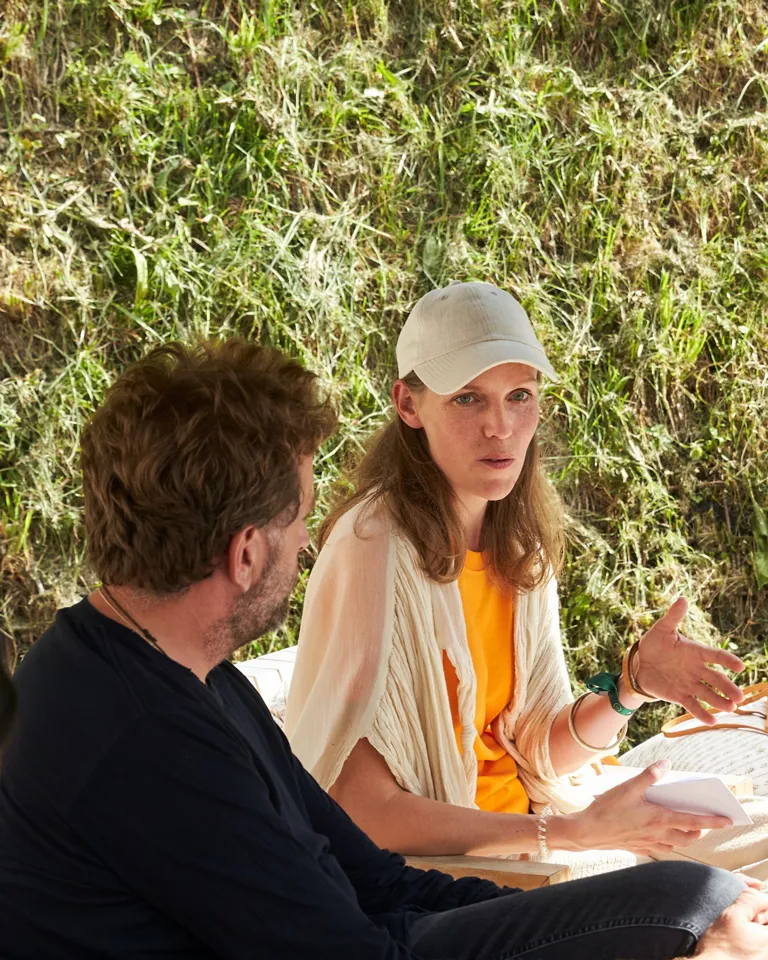
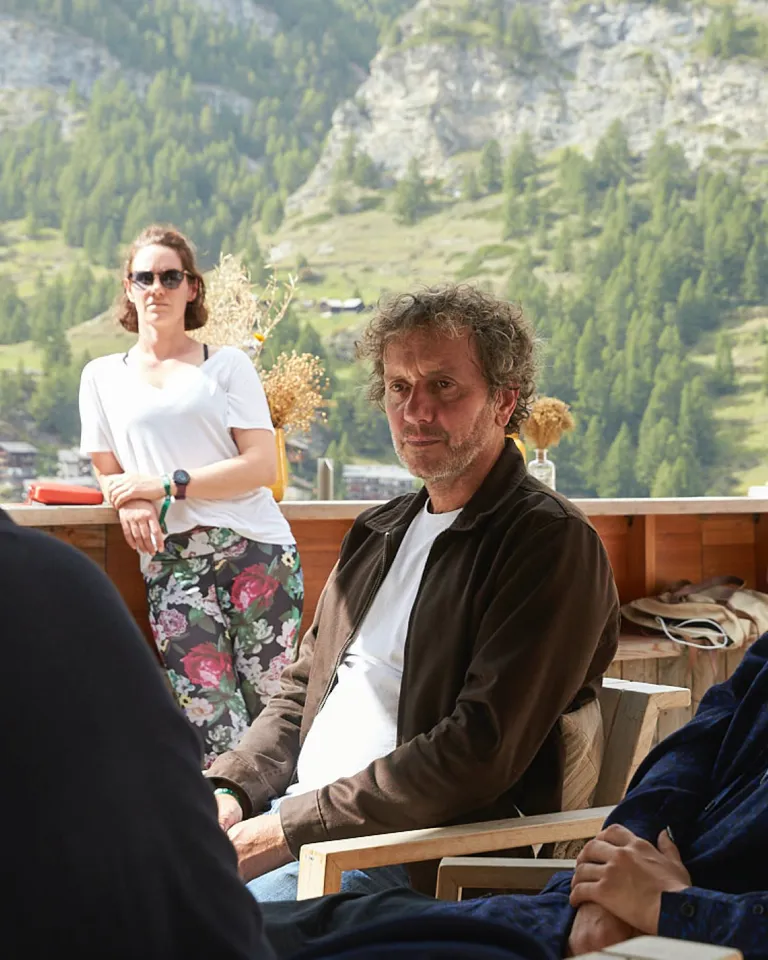
KB: It’s something that Harry and Meghan have been putting together for their organization Travalyst, which is looking to push forward sustainable travel and make us more conscious in our decisions. They’re developing a framework with big corporations who should be the ones invoking change. So, it’s going to be interesting to see how far they go. It’s harder to create that level of systemic change because it needs a lot of money and investment.
MF: Looking back on the pandemic, it was also beautiful in a lot of ways. I enjoyed being at home and going walking in London in my allotted hour of exercise. Many people enjoyed being creative. Acquaintances whose Instagram feeds would normally be filled with Mykonos and Ibiza were camping in a forest 20 miles from the city.
Now I’m concerned, as soon as we can go back to the old ways, we’ll just jump on a plane. Also, as climate change starts to impact our lives, it’s going to change everything. I wrote an article for The Independent on Sunday 20 years ago that predicted there would be a rise in climate disaster tourism—people desperately going to try and see things while they’re still here such as glaciers in South America or gorillas in Africa. It’s on all of us to make sure that we do maintain the learnings from the pandemic.
KB: I’d love to see more travel for all travelers and not just one type, which is generally middle class from the global north. I’d love for travel to be more accessible and transport to be more affordable with sustainable solutions such as trains. Hopefully everyone will take longer and slower trips. Just really spending time and being sincere and purposeful with the cultures and communities you want to integrate with and explore.
DL: In the pandemic, people started to reflect more on what is the purpose of life. If we all do everything with a bit more love—because that has so much power—we end up doing things more purposefully. Let’s be more mindful.
Kesang Ball